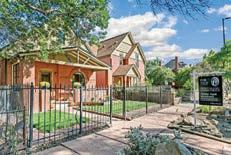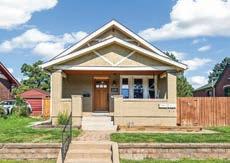







BY ERIC HEINZ
Since opening in 2003 with a student body of about 60 students, Arrupe Jesuit High School has been looking to expand its campus and welcome more children to its educational opportunities.
About 20 years later, the school now has more than 400 students and has grown some of its major programs, but Arrupe Jesuit isn’t stopping there. With new expansion and renovation projects underway, the school hopes to grow its enrollment to more than 500 in the next two years.
“I propose to you this morning that Arrupe Jesuit High School is the living, breathing, ever-expanding example of the di erence that hard work, informed by an Ignatian worldview, can make in the life of a community,” said Michael O’Hagan, president of Arrupe Jesuit, during an Oct. 23 groundbreaking ceremony for the project.
Arrupe Jesuit is building a 25,000-squarefoot addition to the north of the existing school, and they will relocate the school’s main entrance to improve school security
and enhance the operational e ciency.
e extension includes a new gymnasium, locker rooms, an expanded tness center and student support o ces.
Renovations to the existing structure will include adding at least 8,400 square feet for classrooms and student activities.
e school also wants to expand the teacher workroom and cafeteria, in addition to other projects that are intended to increase student enrollment.
Arrupe Jesuit is spending $27.6 million on its expansion and another $13.2 million to renovate the existing school.
During the groundbreaking ceremony, Craig Zoellner, chair of the Arrupe Jesuit board of trustees, said the projects are important to keep the school not just growing but functioning e ciently.
“I’m sure you’ve all heard through the course of this campaign about the shortcomings of the school and its current state, which are numerous,” Zoellner said.
“Classes in stairwells, changing for athletic events in locker rooms, substandard science labs, no place for students to gather. So this project is really about needs, not wants. e students, through their achievements over these last 20 years, have proven that they deserve more and they want more. e faculty deserves more and needs more.”
O’Hagan said the school will lay the foundations for the new science wing and the gymnasium with the expectation of completing the buildings by

Christmas of next year. After the school occupies the new addition, work will begin on the renovation of the current building, which is expected to be completed in September 2026.
e project is part of the school’s “Lead the Way” campaign that was initiated in 2018 by its board of trustees and school leadership, which gathered input from focus groups composed of sta and faculty, students, parents, alumni and donors, according to documents from Arrupe Jesuit.
Denver City Council President Amanda P. Sandoval also attended the groundbreaking ceremony and o ered a few stories of her own education experiences. Sandoval also said Arrupe Jesuit is an important institution in the North Denver community because it helps many Latino students.
“Maybe (one of Arrupe’s students) will become a councilperson,” Sandoval said. “Maybe one of them will be the mayor. Maybe one of them will be our rst Latino president. Let’s imagine a world where Arrupe thrives, where these students thrive and are able to give back. And I ask you, the future generation, when you’re asked, when you’re called upon by your community, please show up like I did because it matters, and you matter to us.”
According to Arrupe Jesuit, the average family income of its students is just more than $46,000. e school stated since 2003, all of its graduates have been accepted to at least one college or university.
BY LONDON LYLE SPECIAL TO COLORADO COMMUNITY MEDIA
At a community gathering held Oct. 29, Denver city o cials and locals met at 4735 Pecos St., a vacant building in the Sunnyside neighborhood.
Formerly Walter W. Remington Elementary School, the Northwest Denver site has been at the center of a controversial proposal that would see it repurposed as a temporary emergency shelter for migrants.
City o cials at the meeting included Denver Police District 1 Commander Edward Leger; Deputy Chief of Sta to the Mayor’s O ce Dominick Moreno; City Council President Amanda P. Sandoval, who also serves as deputy director of the city’s “newcomer program” intended to help house migrants; and City Council members Sarah Parady and Serena GonzalezGutierrez.
e meeting was held to address community members’ concerns about the proposal, which would use the unoccupied school building to house up to 100 newcomers in emergency situations. City o cials said the Remington site would not be used as a long-term solution for migrant housing.
Private swim clubbed planned for West Highland residential neighborhood
Bicyclists call for safety extensions on 29th Ave.



Mailing Address:
750 W. Hampden Ave., Suite 225
Englewood, CO 80110
Phone: 303-566-4100
To subscribe call 303-566-4100 or Scan this QR Code

LINDA SHAPLEY
Director of Editorial & Audience lshapley@coloradocommunitymedia.com
ERIC HEINZ Editor eric@cotln.org
ERIN ADDENBROOKE Marketing Consultant eaddenbrooke@coloradocommunitymedia.com
LINDSAY NICOLETTI Operations/ Circulation Manager lnicoletti@coloradocommunitymedia.com
ERIN FRANKS Production Manager efranks@coloradocommunitymedia.com
ADVISORS
David Sabados and Emma Donahue
BUSINESS INQUIRIES
For advertiser or vendor questions, please email our business department at accounting@ coloradocommunitymedia.com
Columnists & Guest Commentaries
Columnist opinions are not necessarily those of the Profile.
We welcome letters to the editor. Please include your full name, address and the best number to reach you by telephone.
Email letters to eric@cotln.org
Deadline
5 p.m. on the last day of each month for the following month’s paper.
NEWS INQUIRIES
For news inquiries, email news@cotln.org
ADVERTISING INQUIRIES
For advertising inquiries, email jill@cotln.org
DISTRIBUTION
The Denver North Star prints over 34,000 copies each edition and is mailed free of charge to homes and businesses in North Denver. Additional copies can be found at local businesses in the community. New editions are published on the 15th of each month.
The Denver North Star asks readers to make us aware of mistakes we may have made.
Email linda@cotln.org if you notice a possible error you would like us to take a look at.
On Page 10 in the Sept. 15-Oct.
14 edition of The Denver North Star, the name Joe DeRose was misspelled. The above is the correct spelling.
Denver’s updated sidewalk ordinance was unanimously passed by the City Council in October, and the new structure includes a at fee for many residents that will be used to fund repairs to broken and substandard sidewalks.
e fund will also be used to ll in missing links in the sidewalk network. Fee collection starts for residents as soon as January and will be included on the stormwater bill residents already receive.
Nearly all owners of single-family homes will pay a at fee of $150 per year. Less than 5% of parcels, those with more than 230 linear feet of frontage, will pay an impact fee of $3.50 per linear square foot above that 230-feet threshold. Residents who are unsure of what their bills might be can look up estimates on a free website starting around mid-November at denvergov.org/sidewalks.
Denver’s Department of Transportation and Infrastructure (DOTI) will offer instant rebates to homeowners who are income-quali ed in a program very similar to the current discounts for solid waste pickup. Homeowners who earn less than 60% of the area median income (AMI) for their household will get discounts, or what DOTI is calling an “instant rebate” on the sidewalk fee, and residents who earn less than 30% of AMI for their household will not pay any sidewalk fees.
Homeowners who have already applied for the income-based rebates through DOTI’s solid waste program will automatically receive the sidewalk fee rebates. Income-quali ed homeowners who haven’t already applied for solid waste discount and who would like to receive both the rebate for solid waste pickup and the rebate for the sidewalk fee will need to apply through the city website starting in mid-December at denvergov.org/sidewalks
While renters who pay a solid waste bill with an account under their name per their landlord agreement are eligible for rebates for the solid waste program, they

Allen Cowgill
will not be eligible for discounts for the sidewalk fee program. e income-based rebate for the sidewalk fee program is eligible for property owners only, similar to the stormwater drainage fee.
As of late October, the city had a job listing seeking a sidewalk program manager, and the city intends to kick o the program’s master plan e orts for sidewalks in 2025 as the fees start to come in.
DOTI also put out a request for qualication (RFQ) for professional services for a multidisciplinary team to provide professional support for the administration and implementation of the sidewalk program.
DOTI spokesperson Nancy Kuhn indicated the city will have a multiphased approach to repairing sidewalks next year. e rst thing residents will notice is the sidewalk construction already identi ed and funded from the Elevate Denver and Rise Bond programs approved by voters. e second approach is a spot repair program for next year. Kuhn said that it will be “focused on spot repairs that present as urgent safety hazards. We’ll have a form on our website in mid to late November that people can use to report sidewalk safety issues. Our team will triage those reports.”
e spot repair will focus on adjoining sidewalks with gaps of more than 1 inch, elevation di erences between adjoining sidewalks of greater than 1 inch, and sidewalks with extensive raveling and major breaking. Raveling is a term used to describe a sidewalk that has deteriorated and is breaking apart into little pieces.
One question that has come up from residents is, What will be done with agstone sidewalks? Currently, DOTI will not repair sections of agstone sidewalks that are identi ed as safety hazards but will replace them with concrete sidewalks. Most agstone sidewalks cannot be reset to meet current standards for sidewalks and may pose accessibility issues for residents with disabilities.
Another issue that has come up that DOTI addresses in its FAQ is about residents who have recently repaired their sidewalks or have sidewalks that are in excellent condition being curious if they won’t have to pay the sidewalk fee.
DOTI answers it like this: “We all use sidewalks in our daily lives to access schools, businesses and parks and to visit friends and neighbors. Having a safe and connected sidewalk network means everyone can get around with greater ease. Since everyone bene ts from a complete sidewalk network, all Denver property owners are required to pay the Sidewalk Fee. is includes property owners whose sidewalks are currently in good repair, or who have recently completed new sidewalk construction on their property.”
Allen Cowgill is the Council District 1 appointee to the DOTI Advisory Board, where he serves as board co-chair. He also served on the Denver Sidewalk Ordinance 307 committee.
BY ERNEST GURULÉ SPECIAL TO COLORADO COMMUNITY MEDIA
If you ask Denver real estate developer Ilan Salzberg if he’s ready to “take the plunge,” you would get an immediate and emphatic, “Yes!”
If you ask some of the neighbors the same question, there might be a bit of hesitation or even a blank stare. Many of them would not have any idea of what you’re talking about.
Salzberg, you see, wants to reimagine a property at 3719 Wol St. and create a private swim club on the not-quite-single-acre grounds. He and his company, S&CNP, llc, bought the parcel last November for just under $2 million. He also thinks the gentrifying neighborhood is ready for his idea.
“I have lived in the neighborhood for 25 years,” Salzberg said. “I have always wanted a pool I could walk to as long as I’ve lived in the neighborhood.”
As a kid, he said, his pool of choice was Skyline Acres on Jewel Avenue.
It’s not as though he isn’t a fan of other nearby pools, including the Berkeley Park pool, but Salzberg just thinks a new pool would add a bit of recreation to the growing family community.
What Salzberg has in mind for his project—assuming the city goes along with the idea—is an all-encompassing undertaking that would include a pool house, an indoor and outdoor pool that would each accommodate lap swimmers, at least one diving board (a slide is under consideration), a sun deck, a sauna, hot and cold soaking tubs, and an outdoor kitchen.
According to the West Highland Neighborhood Organization (WHNO), the existing property, which is adjacent to the Sprouts grocery store on 38th Avenue and in the shadow of the bygone Elitch’s amusement park is estimated to have been built sometime between 1905 and 1914.
So far, there is no word on whether the property would remain and be upgraded or be demolished for the planned project. Salzberg said he plans to maintain the historic integrity of the property, including keeping the gazebo that sits adjacent to the home, and that preserving historic properties has been in the DNA of most of his company’s work over the years.
e swim club property is now zoned OS-B, a property “intended to protect and promote open space and parks not otherwise owned, operated or leased by the city and intended for active or passive recreation.”
Community members and other interested parties will have an opportunity to speak in support or opposition to the project at a future WHNO meeting.
Salzberg is no newcomer to retooling and restoring historic projects in Denver. Some of his work can be seen in projects across Denver, including a stretch of jobs along the city’s 28th Avenue corridor that include Hogshead Brewery, Leroy’s Bagels and SloHi Co ee + Bike.
Salzberg has also done similar work in Pueblo, where his ngerprints can be found in the restoration of an old junior high school that the city no longer uses. He and his partners have also done restoration work on a number of historic buildings in Kansas City.
Should everything fall into place, the Denverbased Salzberg estimates he and his partners will invest an additional $4 million to complete the project. But until the city signs o on the plan, there is no exact date on when Salzberg or any of the 100 to 150 members of the Wol Street Swimming Club he envisions will “take the plunge.”
BY ERIC HEINZ
Dozens of advocates of safe bicycle lanes on Nov. 2 made their own human protective lane to protest the city of Denver’s recent decision to cancel a portion of a project that would have added a protected area for cyclists along 29th Avenue near Tennyson Street.
Initial plans proposed by the Denver Department of Transportation and Infrastructure (DOTI) would have launched the construction of a protected bike lane along West 29th Avenue from Sheridan Boulevard to Zuni Street, which would have been protected by dividers.
But recently, the department announced it would keep a half-mile west of Tennyson as it is, leaving room for on-street parking to continue in front of businesses and residences after receiving feedback from them.
“In continued discussions with local businesses, residents and users of this corridor, we have determined to move forward with a bicycle lane design that preserves parking and adds some protective elements at the many intersections along this stretch,” DOTI stated. “ e design will still include a protected bike lane and trafc calming from Tennyson to Zuni.”
DOTI said it wanted to maintain a “balance” between the bicyclists and the residents and business owners in the area.


sets a precedent that anyone who doesn’t want to be impacted because of parking in front of their home or their businesses has more power than our collective health and well-being,” Castañeda said.
Molly Lanphier, a community designer with DOTI, said because the city’s paving schedule, which is set in January, aligned with West 29th Avenue where the protective bike lanes are planned, the city wanted to move forward with the project. Lanphier said hosting another public meeting would have set the project back even further.
DOTI stated it would introduce a number of protective features in order to further facilitate the bike lanes that will and won’t be protected. ose features won’t be installed until later next year.
“ roughout the corridor, DOTI will deploy several speed-reduction measures, which include reducing the speed limit from 30 to 25 miles per hour and installing speed cushions,” the department said.
According to DOTI’s survey about the bike lanes, most participants, 68%, said they live or own a business within two blocks of West 29th Avenue and/or travel the street daily.
Alejandra Castañeda, a resident in the area who advocates for pedestrian and bicyclist safety, helped organize the Nov. 2 rally and is looking to petition the city about completing the project, although the initial phases of construction were set to begin
DOTI stated it reached out to the neighborhood through 7,000 mailers, held two public meetings, conducted an online survey, and met with business owners and neighbors about the proposed protective bike lanes.
(weather permitting) in mid-November.
“An unprotected bike anywhere is an unprotected bike everywhere. It’s like building a bridge and leaving half of it o ,” Castañeda said.
Castañeda has started a petition on Change.org to send to the city in hopes they will reverse course and make a continuous protected bike lane from Sheridan to Zuni.
“Because of this change in mind, because of a few residents that complain and a few businesses that complain, that sets
“DOTI will also be installing more rectangular rapid ash beacons (RRFB) and making changes to signalized intersections to make crossing the street safer.”
As e Denver North Star previously reported, a 13-year study by researchers at the University of Colorado Denver and the University of New Mexico found that tra c fatalities fell signi cantly for all road users after a protected bike lane was installed. Denver data from the study showed a 40% drop in fatal crashes among people who bike, walk and drive where protected bike lanes are installed.













BY JACQUI SOMEN SPECIAL TO COLORADO COMMUNITY MEDIA
Mile High Comics in North Denver’s Sunnyside neighborhood is widely known as one of the largest comic book stores in the country—if not the world.
According to its website, the business has more than 10 million comics in stock. is expansive space on the corner of West 46th Avenue and Jason Street is lled with comics, trade paperbacks and hardbacks, toys and vintage movie posters, and it has been likened to the “Holy Land” or “Disneyland” of its kind by one Reddit user.
How has this Denver institution stuck around for more than 50 years to become one of the largest comic book sellers in the world? A lot of it has to do with the ingenuity of owner Chuck Rozanski.
When Rozanski was 14, his mom loaned him $140 to buy his rst comic book collection. He started selling at the Colorado Springs Antique Fair so he could pay her back. He continued to sell comic books through high school and the beginning of college, building up a collection and turning a small pro t.
Soon after, he dropped out of college to become a professional comic book dealer. He lived out of his 1963 Chevy Impala and traveled the country selling and trading comic books. After four months, he re-

turned to Colorado to open his rst storefront.
“Fifty years ago, I opened up the very rst store in Boulder, and I’ve never looked back,” Rozanski said.
Today, Mile High Comics has sold a quarter-billion dollars in comics, toys and graphic novels to people all over the world, a fact that Rozanski takes pride in. But what makes him the happiest is that he’s “been able to bring so much joy into people’s lives,” he said.
Rozanski has been able to continue to make people happy through comics for over ve decades because he’s an agile businessman. As his employee, Doug, said, “Chuck has been able to embrace the change.”
In Rozanski’s own words, Mile High Comics has had lasting power because of “ exibility and adaptability.” In one example, he discussed the closing down of his Colorado Boulevard store.
“Yes, that store did great in the past,” he said. “Yes, I really liked it. I was very fond of the customers who shopped at the store, but we were losing money, and it was time to shut it down, move on and do something bigger and better. at’s what you have to do—constantly adapt.”
Mile High Comics has also had staying power because of its people, he said.
“I think it’s really important to know that Mile High Comics is not just me,” Rozanski said.


e popular comic book business is made up of a team of people, many of whom have worked there for more than 30 years.
“Mile High Comics is not just the ful llment of my dreams and my vision, but also theirs,” he said, “and recognizing that, it’s such a cool place because we work as a team and we’re complementary—I am just one cog in a beautiful machine.”
Lisa Woolley, who has been working at Mile High Comics for 35 years, said she likes working at Mile High Comics be-



cause of “the people, customers and lowkey atmosphere.” Mile High Comics has operated in about 30 stores over the years.
After 50 years, Rozanski is still driving adaptability in his Sunnyside megastore. Mile High Comics is constantly adding new product categories. For instance, it has just started selling Funko gures, but not just any of these large-headed toys. Rozanski wanted to buy them from col-

lectors and fans. Today, the store has over 5,000 of these popular gures in stock.
“We’re constantly trying out new genres and new o shoots because that’s part of the adaptability,” he said. “We’re here to serve our clientele and to help them with their collections. at’s something that you always have to keep in the forefront of your mind. It’s not about making you happy. It’s about making them happy.”
BY CLIVE KRAJNIK AND JAMIE CATO
e rst ever Denver Dog Days event took place Oct. 13 at Sloan’s Lake. Dog lovers from across the community gathered at the lake to celebrate everything cool that was canine.
Denver Dogs Days was created by two local dog lovers, Charlie Adams and Skylar Scheele. Adams owns the business e Naughty Dog, and Skylar is the founder of Denver Dog Recon newsletter. ey envisioned an extraordinary dog event for this area and did a fabulous job bringing it to fruition.
e event began on a beautiful fall morning near the childrens’ park on the south side of the lake. Eighty- ve vendors set up booths with tons of pet-related products. Many of the businesses had free swag and fun giveaways.
ere were interactive activities such as bracelet-making, cornhole and photo props. A DJ played music and made announcements to get the crowd hyped. Dogs, dog parents and fur friends were everywhere perusing through the vendors and grabbing tasty treats at the food trucks. Midway through the morning, the real fun started—a dog show with numerous categories that included: Best Owner/
Dog Look-Alike, Best Coat, Best Trick, Best Costume, Cutest Puppy, Best Underbite, Senior Sweethearts, Most Spirited and Best in Show.
e hosts of the show charmed the audience with silly dog jokes. Contestants enthusiastically showed o their dogs while the crowd eagerly hooted and hollered. e winner of the costume contest, Lord Reginald, a golden retriever, impressed onlookers with his fancy robe and golden crown.
MacKinnon, a delightful mutt, was dressed as his namesake, Colorado Avalanche hockey player Nathan MacKinnon. e costumes were de nitely a hit, making everyone laugh and cheer. Another fan favorite was Birdie Mae, a bulldog who won Best Underbite.
Halfway through the contest, Soul Dog Rescue brought out adoptable puppies to show o to the audience. Everyone enjoyed petting the cute pups. e event was super successful with an estimated 2,000 people and 1,000 dogs in attendance. Adams said the event raised money for the MaxFund Animal Adoption Center and organizers hope to donate $2,000 to them.
BY JILL CARSTENS
Imagine this: Denver’s population is a fraction of what it is now. ere is not much of an economy. ere are few fancy restaurants, music venues or art galleries, and many parts of the city are a bit run down. But rent is cheap, especially in North Denver.
In this scenario — the mid-1970s — you might have been yearning for a cool place to hang out. If you were lucky, you found Muddy’s co ee house, which was located at 2557 15th St.
“My friends and I had been looking for a new place to have our weekly debates,” Muddy’s founder and North Denver native Joe DeRose said.
DeRose had just graduated from CU Boulder and was heavily in uenced by the radical teachings of well-known professor Howard Higman. Under Higman’s teachings, DeRose and his peers had learned to question society’s institutions and value literature for its ability to shed light on our everyday lives.
“ e aesthetic of Muddy’s was warm and welcoming,” said Elisa Cohen, who worked there during her college years. “I had just moved back to North Denver and was looking for a place to just hang out. Right as I walked into Muddy’s I was invited to join folks at their table for conversation.”
Upon rst glance, Cohen described Muddy’s as a disheveled bookstore, with warmth emanating from the worn wood of the historic building.


“ ere were burlap co ee-bean sacks hanging on the walls as makeshift wallpaper and couches for communing. Everyone was welcome, from neighborhood weirdos to chess-playing intellects,” she said. e words most often used to describe this unassuming locale are “authentic” and “cultivating community.”
Gritty, urban, diverse and genuine were the adjectives that Elisa Cohen’s sister, Basha Cohen, used to describe this beloved co eehouse.
“It was a joint,” she said, “It wasn’t fancy. ere just weren’t many places you could go and just talk all night. ere was nothing like it, I miss it. I wish it still existed in this time where you enter a coffeehouse now to observe heads focused on phones rather than face to face conversation.”
But all those interviewed said Muddy’s would not have been so special had it not been for DeRose’s vision, inviting personality and proclivity for fostering community.
“We came up with the concept for Muddy’s while summiting Longs Peak,” he remembered.
DeRose and his friends had been in uenced by the intellect of the Beat Generation and the optimism of the hippie era. “ e goal was to encourage freedom of thought, exploration of thought — that a broader perspective creates a broader personal infrastructure,” touted DeRose, who still lives by this philosophy.
“Civil discourse was paramount,” he added, citing that one day the co ee shop would host a poetry reading while the next day a coalition of homeless men. “We modeled Muddy’s after some San Francisco co ee houses and were in uenced by Jack Kerouac and Herman Hesse’s writings, where folks could meet to engage in vibrant conversation without worrying about getting kicked out.”
Muddy’s was open all night, which made it a haven for young people, musicians and after-theater patrons. Many

mayors of the time also popped into Muddy’s as a place where they could relax without pressure, Dick Lamm and Federico Pena to name a few.
“Freddy Rodriguez and his band would come in after their set at El Chapultepec and jam late into the night at Muddy’s!” DeRose exclaimed.
Soon, Muddy’s added a theater where local, independent playwrights could put on productions. Local art graced the walls at a time when there were few exhibit spaces for artists. DeRose was cultivating the idea, originated by Kerouac, that Denver could be an oasis of culture between the two coasts.
e spirit of this unconventional placemaking became di cult in the mid-1980s when real estate began making a rise on the Northside.
“ ey were going to kick us out without much notice,” DeRose recalled, “and we needed time to nd a new location.”
Luckily, because he had grown up in Denver, DeRose had connections down at the courthouse, which helped delay Muddy’s ousting of the North Denver location until they found a new home downtown at 20th and Champa streets where the co eehouse remained until 1992.
Even though Muddy’s is long gone now, those who spent time there say it had a lasting impression on their lives.
e “oasis” idea was based on values of culture and places where all are welcome and a diversity of ideas can be considered, civilly and with respect.
When asked about its lasting impression, Elisa Cohen said that her tenure at Muddy’s gave her a “con dence of belonging.” And who doesn’t want that?
Next time you’re in the LoHi neighborhood, at that funky intersection where three streets converge,15th Street, Boulder and Umatilla, look to the northeast and you will see where Muddy’s once was. Maybe you’ll feel those good old vibes, even just for a moment.


















Neighborhoods are full of people, living their lives and making their small contributions to the world. Some reach further, becoming neighborhood, city or state leaders. Still others have national reputations. Only a few turn up on the international stage. One of those was Golda Meir, the rst woman prime minister of the new nation of Israel. is month I will share her story and her connection with our neighborhood.
Goldie (Golda) Mabovitch was born in Kiev, Ukraine, in 1898 to Moshe and Bluma Mabovitch. She had two surviving sisters, Sheyna (Shayna), the older, and younger sister, Zipke. Shayna married Sam Korngold and later moved to Denver. Moshe emigrated to Milwaukee, Wisconsin, in 1903, and his family followed in 1906. Golda attended school in Milwaukee until her father insisted that she marry rather than attend a teachers college. She ed to Denver to stay with Shayna and Sam and their daughter, Judith, in their duplex at 1606/1608 Julian St. e Korngolds lived in the heart of the West Colfax Eastern-Jewish immigrant district. It was the nearby Jewish Consumptive Relief Society that drew Jewish immigrants who su ered from tuber-
GUEST
COLUMN
Rebecca A. Hunt

culosis to Denver and to the neighborhood. Sam owned Korngold’s Cleaning and Pressing Works located near the Brown Palace Hotel.
Shayna and Sam were part of a large group of Labor Zionists, socialists and other intellectuals who welcomed Golda to their evening discussions. In between these sessions, Golda attended North Denver High School and worked parttime at Sam’s business. At the meetings, she met Morris Meyerson, who eventually became her husband. ey married in December 1917.
In 1916, Golda returned to Milwaukee, where she nished high school, went to a teachers college, taught reading to children at a folkshul and spoke on Labor Zionism to informal groups.
But increasingly, she was watching political changes in Palestine, and when the British agreed to the existence of a Jewish homeland there, she decided she wanted to move to Palestine to live in a kibbutz.
Four years after she and Morris married, they moved to Israel. e couple had a daughter, Sarah, and a son, Menachem. Morris was not interested in politics, so eventually the couple parted.



She changed her name from Meyerson to Meir.
Over the decades, Golda became involved in politics, rising up the ranks of local, state and nally national government. She served as a member of the government of the Jewish Agency, which ran edgling Israel before it became a formal nation in 1948.
After that Golda served as foreign minister, meeting with foreign leaders as Israel worked to be recognized by the world. She joined the Knesset, which was the Israeli parliament. In 1969, just as she was planning to retire, the prime minister died and she was asked to ll the position. She continued in that post through the Yom Kippur War and nally retired in 1974.
Before her death from cancer in 1978, she continued to act as a diplomat for Israel. She became one of the most beloved women diplomats in the world.
In the 1980s, the little duplex on Julian Street was empty, had su ered from a re, a tornado and vandalism, and the city had tagged it for demolition.
Jean May, a local activist, discovered the house’s legacy and spoke to Northside resident state Sen. Dennis Gallagher about what it would take to save it. Galla-

gher enlisted Norman Provizer, a political science professor at Metro State College, to help.
Provizer had broader connections in the Jewish community, and they all began a years-long battle to save the house. In 1988, the Auraria Foundation secured a site on the Auraria campus, and 1606/1608 Julian came to its nal resting place after two temporary stops. Fully restored as a museum and as the Golda Meir Center for Political Leadership, it is the only U.S. home of Golda Meir still in existence.
Golda Meir saw her time in Denver as pivotal to who she became. She once said “to the extent that my own future convictions were shaped and given form, and ideas were discarded or accepted by me while I was growing up, those talk- lled nights in Denver played a considerable role.” She added, “Denver was a turning point because my real education began. In Denver, life really opened up for me.”
Dr. Rebecca A. Hunt has been a resident of North Denver since 1993. She worked in museums and then taught museum studies and Colorado, Denver, women’s and immigration history at the University of Colorado Denver until she retired in 2020.







BY JACQUI SOMEN
in ne art, but elevated artistic expression is a trend in the trade. One must look no further than North Denver to see how ne art comes to life in the industry.

at 38th Avenue and Lowell Street, came to tattoo artistry through a lifelong love for drawing, a degree in graphic design, and a previous career in woodworking and fabrication, skills that helped him build out his shop when he moved in almost four years ago.
KCO’s tattoo style is what he calls a “twist on American traditional.” He’s painted over a hundred 11-by-14-inch designs, many of which are displayed on the walls of Pretty Sturdy.
People can walk in and choose a design o the wall or ask KCO or the shop’s other two artists to create a custom design. Although these tattoo artists are talented in their own right, the client’s self-expression is always top-of-mind, KCO said.
“Our job is to help them into something they’ll be happy with for a long time,” KCO said.
Skyler Ja eris of Skyline Tattoo in Highlands Square also found himself as a tattoo artist after studying ne art. Ja eris studied animation and drawing at e Art Institute of Colorado. He said he always knew he wanted to be a tattooed person, and after he nished school that interest sparked into a career.
Ja eris attended e Denver Body Art School and started working in Denver tattoo shops. After a few years, he opened his own. He moved into the Highlands Square area because he wanted to be in a neighborhood focused on “family, integrity, respect and hard work.” Ja eris tattoos mostly large-scale, black-and-gray work but said he can tattoo “most styles,” a skill he attributes to his ne arts education.
Chris Yaws, a tattoo artist at Live Easy on Tennyson Street, said he met a man who taught him how to tattoo on himself while serving in the Air Force. is experience reeled him in, and

from then on he was “eating, sleeping and Yaws has been tattooing for more than 30 years, and his style is described on Live Easy’s website as a “very bold, illustrative style complimented by superb detail and reer an artist told him, “if you’re a tattooer, you should be able to tattoo anything that comes in the door,” a piece of advice that has stayed with him through his career. ough Yaws didn’t have formal ne arts training (aside from the expertise learned over three decades of experience), he spearheads initiatives that highlight the more artistic side of tattoos, and he paints in his spare time.
Each year, Live Easy hosts the Community Collection Art Show, an exhibition that features tattoo arts with the goal of “bringing the community of tattooers together,” Yaws said. Live Easy also hosts monthly art shows featuring local artists during Tennyson’s First Friday event. is December, the tattoo artists of Live Easy will display their own art at the event.
All of these artists have di erent backgrounds, but they share a sentiment that





tion for the art form of tattoo art through
“We have a big party, and people come in and check out all the art and they’re like, ‘Oh my God, you guys are like artists,’”

tattoo work.”
A conversation about art and the tattoo industry must also include a note on how social media has transformed the trade. Each of the artists mentioned Instagram as a tool to build awareness for their work and shops or to nd artists.
In addition to giving tattoo artists a way to display their art globally and for giving clients a way to seamlessly seek their next tattoo, the social media platform has enabled an elevation of the artform. According to an article published inInked, a tattoo-centric publication, Instagram gives artists the opportunity to learn, “which has bene ted the industry by raising the bar for quality and engaging art work.”
Another researcher fromWestern New England University points to Instagram as a tool that has “increased acceptability (of











If I had a nickel for every time I have heard someone say something like “we just can’t take another day of (blank),” I’d have a great big pile of nickels.
Fill in the blank: the pandemic, gun violence, election ads, war overseas, political division. It’s no wonder that the Centers for Disease Control and Protection reports symptoms of anxiety and depressive disorder increased considerably during 2020, compared with the same period in 2019, and consistently since then.
Turn on the evening news and your head might spin with all that is wrong and scary in the world. It’s enough to make a person feel anxious, isolated, powerless and unwell.
But guess what. We can take another day. We must take it, and we must keep doing the things we need to do to take care of ourselves and each other at the same time. e world needs us to show up right now as our best, most reasonable, most thoughtful, most caring and most willing-to-listen-to-each-other selves.
e level of uncertainty demands it. Yes, there are likely going to be moments
Erika

we want to hide in our closet, yell at the television or scowl at the driver whose bumper sticker insults our political sensibilities. We can take that too. Not only can we take it, we can thrive through it. How do I know this? I see it. I see you reading this paper because you want to stay connected with your village. I see you dragging yourself out the door for a 10-minute walk after dinner because you know it can moderate your blood-sugar levels, boost your mood and help you sleep. I see you keeping veggies on the menu even though there’s still a bag of Halloween candy in the closet. I see you putting one foot in front of the other even though the path forward is unclear and the din of uncertainty is as undeniable as the chill in the autumn morning air. is is enough. All of the little moments that we spend caring for ourselves are enough. ere is no rule that says the only workout that will help you melt some of your fall baking season girth is an hour-long workout. Or that you can’t manage your blood pressure unless you ditch your kids and take up yoga with some Su in Sri Lanka.


Balance on one foot while you brush your teeth. Stand up and wiggle every time your phone rings. Buy a new color vegetable and learn how to cook it. Drink a cup of water after you wash your hands. Take a deep breath. (Do it. Now. Seriously.) Do 10 jumping jacks to make the coffee brew faster. Write down three things you are grateful for.
I could go on and on, and I bet you could, too. e list of tiny ways we can contribute to our own resilience is never ending. But “knowing” this list is only a fraction of the battle. e real prize lies in believing the world is going to keep on turning, the world needs a healthy you in it, and you alone have the power to carve out moments of your day to do these things. is time of year we will be admonished at every turn to feel grateful. Practicing gratitude most certainly is a worthwhile endeavor.
Yet I deeply believe we must honor and embrace the fact that gratitude can sometimes be pretty tough to come by. Uncertainty can dampen gratitude for sure. Which is why I always suggest, if you are having trouble coming up with a list of things for which you are thankful, start small or overly obvious; I personally
fall back on opposable thumbs or indoor plumbing. Just like gratitude, our wellness practice need not be epic in nature to do its job. In fact, the less epic the better.
Fall back on small and obvious! Because like uncertainty, our wellness journey is never ending. If we are going to keep on keeping on (which we are!) we need to have the sort of practice that we can sustain — the kind that celebrates the miniscule moments making us the sort of humans the world needs us to be. Grateful, connected, kind, powerful. ese are the goals. Even in the face of all the things we may think we can not endure, with these things, we can. And we can do it well.
Erika Taylor is a community wellness instigator at Taylored Fitness, the original online wellness mentoring system. Taylored Fitness believes that everyone can discover small changes in order to make themselves and their communities more vibrant, and that it is only possible to do our best work in the world if we make a daily commitment to our health. Visit facebook.com/erika.taylor.303 or email erika@taylored tness.com.
Wendy Thomas

enver Bryant (pronouns: xe/xem/ xyr) loves pie. Even bad pie. Xe blogs about pie—the best, the worst, the frozen, where to get it and which to avoid. is month’s book, “Key Lime Sky” by Al Hess, is a near-future, sci- , queer romance that pairs an alien invasion with a lovable, autistic, nonbinary protagonist.
Pie is such a part of Denver’s identity that the residents of Muddy Gap, Wyoming, call xem “Professor Pie.” Denver doesn’t love the nickname. Xe thinks the townsfolk don’t care about xem enough to remember xyr name. Xe knows that xe o ends people with xyr brutal honesty, stimming behaviors, and avoidance of all things loud and overstimulating.
Denver is no stranger to loneliness, having been abandoned by xyr substanceabusing mother at a young age, but xe had high hopes of a fresh start in Muddy Gap.
After an especially egregious slice of cherry pie and blunt review on the blog, Denver is told not to return to the cafe that served it. On xyr way home that night, xe encounters strange objects and lights in the sky over Muddy Gap. As a child obsessed with all things UFO and paranormal, Denver knows exactly what xe saw.
e next day, things get weird. Strange seashells hail down from the sky, townspeople are alternately in a trance and behaving aggressively, and mounds of sand show up in unexpected places. No one believes Denver when xe explains the area is experiencing an alien invasion, no one except for a handsome bartender named Ezra with a handlebar mustache.
Together, Ezra and Denver navigate the world in which buildings move and split, and the landscape rearranges itself. Denver livestreams a video on xyr blog of the highway looping back on itself when they attempt to escape town. is video may be


the post Denver’s been hoping for, the one that rivals xyr viral review of Alphabet Pie that brought much-needed cash owing xyr way. It may also be the only hope they have of getting help from the outside world. As the situation becomes more dire, it fans the ames of the budding romance between Denver and Ezra. Saving the planet was never more romantic. is delightful story of home, found family and long-awaited love will be sure to warm readers’ hearts. With courage and humor, Denver makes the case that everything will be OK, no matter how upside down and twisted life feels sometimes. is is a true gem of a book. Check out“Key Lime Sky” at a Denver Public Library branch near you. Want more recommendations? Try our Personalized Reading List service at denverlibrary.org/reads.
Wendy omas is a librarian at the Smiley Branch Library. When not reading or recommending books, you can nd her hiking with her dogs.
“We can utilize this facility for overnight shelter, provide newcomers with dignity and then help them gure out where they’re going long-term,” Sandoval said. e proposal comes during a period of declining newcomer arrivals, as noted by city representatives at the meeting. Since December 2023, 43,000 individuals have crossed the southern U.S. border seeking refuge. However, Denver saw a signi cant decrease in incoming migrants, with arrivals dropping to around 500 this summer from a peak of 5,000 in October 2023. In early October of this year, the city closed the last of its newcomer shelters. Sandoval attributed this decline to changes in federal policies under the Biden administration and intensi ed enforcement at the Mexico-U.S. border.
During the Q&A session, the crowd had mixed reactions. Some community members inquired how they could help newcomers, and Sandoval encouraged them to check Facebook for community support pages such as “Highlands Moms and Neighbors,” a private Facebook group formed during the Zuni encampments where newcomers, Spanish speakers and neighbors can connect and help one another through donating supplies or their time.
On the other hand, some residents at the meeting voiced concerns about property values, potential safety issues and questioned whether the Remington site was a suitable property for a shelter.
Sandoval, Parady and Gonzalez-Gutierrez assured residents that no changes would be happening until the building met zoning requirements, a process that doesn’t happen overnight, as nal approval depends on community input, City Council review and lease requirements.
If the Remington site is activated as an emergency shelter, city o cials said it will primarily be used to provide essential services to newcomers. is includes 24-hour sta ng, three meals daily, and secure facilities to ensure the safety and dignity of residents.
e city is also looking into dual-purposing the site as a youth programming center during non-emergency periods
in collaboration with Denver Public Schools (DPS). Doing so could reduce operating costs, which are estimated at $381,000 with an additional $300,000 set aside for potential damages.
A representative from Denver Public Schools said that operational costs for the Remington site would remain at this rate due to the facility’s limited capacity of 100 people, and the city would continue to communicate with residents throughout the process.
Many residents asked what the timeline would be for the zoning process required to convert Remington Elementary into a temporary shelter. Gonzalez-Gutierrez explained that the city is pursuing a zoning use permit for the Remington site. If the permit is granted, it would allow the building to operate as an emergency shelter under speci c conditions.
e city must also nalize a lease agreement with DPS, which would then require City Council review and approval.
Once the zoning and leasing logistics are gured out, the city plans to conduct additional outreach and feedback sessions to keep residents informed and involved in the decision-making process.
Some residents in the surrounding neighborhood said they had concerns about safety, should the site be repurposed into an emergency shelter. Sandoval was quick to note that she is from the neighborhood, having grown up just two blocks from the site, and considers safety to be a top priority.
“I got a bunch of questions that are very similar,” Leger said. “One of them is whether or not our police o cers have seen an in ux of undocumented migrants cause an increase in crime. Well, we have some public-facing crime dashboards that show all the crime in Northwest Denver, everything from murder down to petty theft.
“I would encourage you to go to that location and see the crime trends in the area, and then monthly, on every third Wednesday of each month, we have a community advisory group meeting with the chief of police,” Leger continued. “We talk about crime trends.”
He added although past instances of newcomer shelters have not resulted in increased crime rates, the city “remains vigilant and prepared to address any issues that may arise.”
Additional safety precautions outlined
by city o cials include regular patrols and dedicated security personnel in the evenings. Denver’s Support Team Assisted Response (STAR) team—comprised of mental health professionals and emergency response sta —will be available to assist with any issues arising at the site. is approach, according to Parady, aims to mitigate community impact and ensure the site operates smoothly and safely.
City o cials also encouraged community members to contact their representatives and to sign up for public comment at Monday night Cty Council meetings should they have further comments or concerns.
For more information on the city’s newcomer program or to submit feedback, residents can email newcomerprogram@ denvergov.org.
BY COLORADO COMMUNITY MEDIA STAFF
Regis University recently announced its “ e Road to Regis” program to o er full tuition for up to four years to eligible students in Colorado, Arizona, Kansas, Nebraska, New Mexico, Oklahoma, Utah and Wyoming, which will begin in fall 2025.
“We’re breaking down nancial and geographic barriers to make a Regis education accessible to talented students,” said J.T. Smith, associate vice president and dean of admissions at Regis University. “ is program re ects our dedication to the Jesuit values of inclusivity, social justice and service to others.” e program is open to incoming traditional rst-year and transfer students who are residents of Colorado and surrounding states, have a cumulative high school GPA of 3.0 or higher and have a family adjusted gross income (AGI) of $75,000 or less, as reported on the FAFSA
and reviewed annually.
e Road to Regis program works in conjunction with federal, state, and other forms of nancial aid, such as scholarships and grants, to cover the remaining tuition for eligible students. is ensures that students receive the full bene t of their nancial aid package while alleviating the burden of additional costs. e admissions team is available to provide detailed guidance on how the program integrates with other nancial aid options.
Prospective students can visit regis. edu for more information or to attend an upcoming event to learn how they can embark on their Road to Regis. Regis University also invites community organizations and educators to help spread the word about this transformative opportunity.
For additional inquiries, contact ruadmissions@regis.edu or call 800-9447667.





















When local fth-grader Calla was asked what her favorite part of the event was, she replied, “It was super enjoyable seeing all the dogs and getting to pet them.”



e rst Denver Dogs Days event went o without a hitch. e adorable dogs put smiles on all of the attendees’ faces. e joy was palpable, and everyone left content. is event is sure to grow and become even more “paw-sitively paw-some” in the future.
Jamie Cato is a local tutor and Clive Krajnik is a fourth-grade student at Brown International Academy. e story was written by Krajnik and edited by Cato prior to submission.
BY COLORADO COMMUNITY MEDIA STAFF
After years of Art in the Highlands Northside Holiday Market, new management changed the name to the Denver Northside Holiday Market and found two students at North High School to design a new logo.
Lea Gentry and Sophia Isom, class of 2026, created the logo as part of North High School’s CTE Graphic Design Pathway. Led by teacher Steve Wiant, students engage in experiential learning that happens in the workplace to gain essential graphic design skills. e pathway is also partnered with Community College of Denver to o er students to take the classes to earn free college credits here on our campus. is class o ers a fouryear pathway to allow students to maximize college credits earned and to build a complete set of design skills.
With the skills learned, past students have worked in suc-
cessful internships, earned international and national design awards, and have started design careers while in high school. e students started work on the logo in February and delivered completed logos by the end of May.
e Denver Northside Holiday Market will take place 10 a.m. to 4 p.m. Nov. 30 and Dec. 1at the Elks Lodge #17, 2475 W. 26th Ave. Featuring a variety of local artisans who create and sell items, there is something for everyone. Items include personalized ornaments and water bottles, organic natural skin care products, cashmere wool mittens and scarves, unique western decor, ceramics, a variety of sewn items and unique stu ed animals and more with various price points. Local entertainment will be on the stage and Santa will be scheduled throughout the two days to have photos taken. Free admission and free parking will be available.
Have you ever walked into a historic building and felt transformed? Did you happen to notice the architecture of your high school at the time? Did it a ect you? Maybe some of us become more aware of these details and how they shaped us, or not, through the passage of time.
I recently had the pleasure of exploring the physical spaces of North High School, North Denver’s “home-base” high school, through a meticulously curated tour. e architecture of American schools has transformed a lot through the decades. It seems during the midcentury, architecture was in uenced by practicality and the a ordability of building materials. A functionality perspective dictated the modernism trends of the time, causing some of those schools to appear a bit bland compared to those constructed in previous decades. is Beaux Arts design of North, originally constructed in the early 20th century, seems to breathe educationally inspired stories through its octagonal black-and-white-tiled oors and murals of its original lobby. I was really taken with the grandeur of the building and wondered, Did it make the students feel special? Did it inspire a desire to gain knowledge and do great things?
As my steps echoed through the hallways, I approached the decorative wrought-iron railings of the staircase and took a moment to gaze out the large windows to an expansive view of downtown Denver. I secretly wished I could’ve


inhabited such a gorgeous building during my own high school years. e schools I attended as a kid, and even many as a teacher, resembled more a prison than a hall of learning. Architecture can wield power over our mood, overall well-being and the trajectories of our lives. is idea was validated in a 2023 Psychology Today article, “How Architecture A ects Our oughts, Mood, and Behavior,” highlighting the relationship between humans and the environment.
Writer Danish Kurani, founder of an architectural rm that designs spaces for education, stated, “Some places make us feel smarter or healthier, and some places make us miserable. But every place is exerting some in uence on us. at’s because architecture is the container for our lives. e shape we give to architecture is the shape we give to our lives.”
My rst teaching job was at 1301 Quebec St. in east Denver. is large, highceilinged, red-brick building housed one of Denver’s very rst kindergartens and became a longtime home for Stanley British Primary School. I wrote about the rst time I entered this school in my memoir: “ e aesthetics of this old building seemed to complement the activities of the children. Groups of students constructed magni cent block buildings in a spacious hallway adjacent to a grand
staircase that reached up to lofty ceilings.” e classrooms were spacious and I recall windows that reached up to those tall ceilings with sunshine streaming in, adding to a happy and productive ambience for the children.
e physical environment is one important thing. A great school also embraces a philosophy of support, community and even a sense of tradition.
My years at Manning Junior High in Golden are lled with memories of walking through windowless, locker-lined and dimly lit hallways of a cinder-block building.
However, the student population and teachers were a vibrant bunch, perhaps neutralizing the e ects of those dark hallways. e redeeming physical feature of the school was a quad in the center of the building that acted like our own outdoor plaza and let in some natural light to the cafeteria. However, at the time I attended, only the oldest students, the ninthgraders, were permitted to hang out in the quad, a privilege we looked forward to during our tenure there.
North High School indeed values its legacy as demonstrated by glass cabinets lled with pictures, trophies and even a collection of historic science equipment. I was impressed to learn that at one time the school boasted its own telescope for a class one science teacher helped procure through a program with NASA.
My tour guide that day, from the class of 1966, was a proud alum who knew much about the school’s history. North
is proud of its alumni who have gone out into the world over the years to accomplish things, large and small, from scienti c breakthroughs to surviving active military service. Some have come back to teach at their alma mater. As far as an administration, I don’t think I have ever met such a dedicated crew.
I was also happy to learn that students’ merit was considered not just on academics, but also on positive social interactions, which is so important in our social media-heavy environment these days. is attribute is held high through the school’s scholarship program.
Not all of us are fortunate enough to go to school in a beautiful, historic building, but we can endeavor to search for and create more positive physical environments. It’s all in the details. Like paying attention to lighting or choice of furnishings or wall color. Like a home, a school can re ect our beliefs and purposes, and, yes, cherished history. Brandishing bits of the past, however long ago, emotes a sense of pride and belonging.
When you look for schools for your child keep these ideals in mind or, if anything, help foster a positive learning environment with your child’s school. Take inspiration next time you drive by North High School.
Jill Carstens taught for 30 years and now enjoys writing about that time here and in her recently published memoir, “Getting Over Vivian.” Find out more at www.jillcarstenswriter.com.

“A



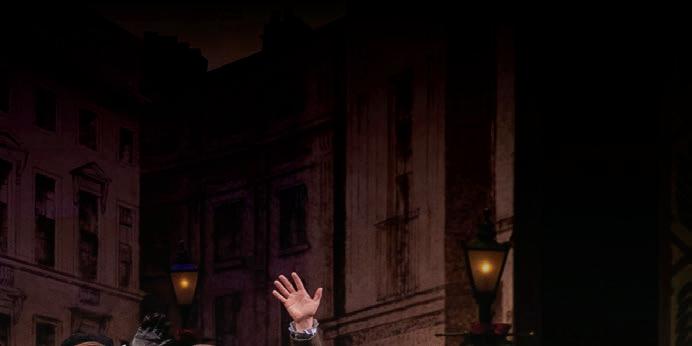
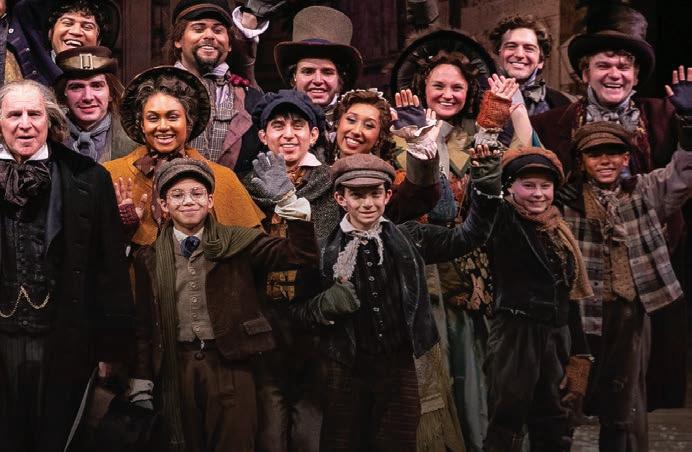




3
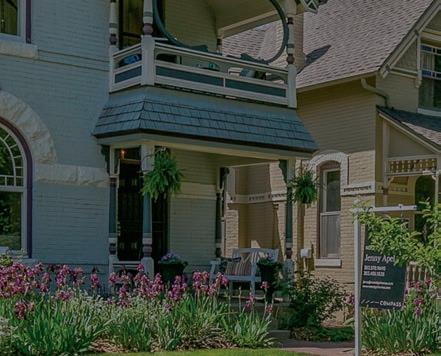





















5



